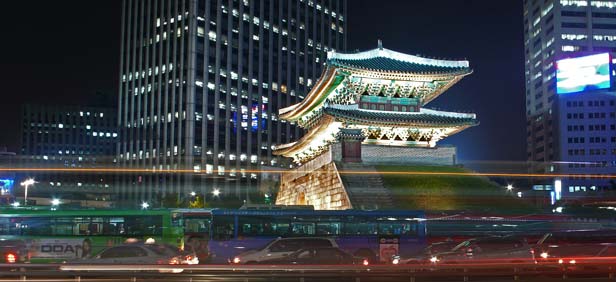Gender Discrimination in Paygap in Korea

Overview
Due its rapid industrialization from the 1960s to the 1990s, Korea now ranks as one of the world's top fifteen economies (International Monetary Fund 2010), resulting in a rapid increase in the number of professional positions within Korean businesses. Nevertheless, Korean females continue to be marginalized in leadership and decision-making contexts, with limited employment opportunities in middle and upper management or executive or boardroom positions (Siegel et al. 2011; World Bank 2007). The female labor force participation rate jumped from 39.3% in the 1970s to 50% in 2008, decreasing slightly to 49.2% in 2011. Recent research demonstrates greater profitability for firms that employ women in higher level positions in Korea, but their overall employment rate is 10% below that of key advanced nations (Werner, Devillard, and Sancier-Sultan 2010). A noticeable wage gap exists between comparably educated men and women who perform the same jobs (Cho, Kwon, and Ahn 2010; Jones and Tsutsumi 2009). Sex-segregation is more predominant in traditional societies than in advanced nations in educational levels, fields of study, and occupational segregation (Buchman, Kriesei, and Sacchi 2010; Yukongki and Rowley 2006; Yukongdi and Benson 2006; Ahn 2006).[1]
Gender Discrimination
Since 2008, the funding for civic groups was cut dramatically, leaving many groups struggling for survival. As women’s organizations found themselves once again in opposition, they refocused on their work on changes to the patriarchal structure of society. Despite the decline in women’s studies programs and feminist activism on the whole, the author concludes with a positive outlook on the future of the feminist movement in South Korea.[2] Although most studies about health effect of discriminatory experiences were conducted in US or European countries, a growing number of papers indicated that discriminatory experience is associated with high prevalence of poor health conditions in Asian countries such as Japan, Hong Kong and China. In South Korea which has strong patriarchal tradition and pervasive educational inequality [14,15,16], Kim and Williams reported that gender and education level are the most common sources of self-reported discriminatory experiences and there is a dose-response relationship between the number of situation of discriminatory experiences and poor self-rated health. [3]
Korean Gender Discrimination In Wage Gap

1960s, excepting the years following the financial crisis in late 1997, the economic status of women in the labour market has been greatly enhanced in many respects. For the period 1963–2002, the labour force participation rate of women increased from 37.0% to 49.7%, raising women’s share in the total labour force from 34.4% to 41.3%. On the qualitative side, the share of college graduates in the women’s labour force soared from 2.6% to 20.7% between 1980 and 2002, reducing the disparity with the men’s ratio, which tripled from 9.2% to 29.5% during the same period. For the younger age groups, however, this gender gap ineducational attainment is far less apparent. Top hierarchical occupations such as professionals and technicians are less likely to be affected by gender discrimination, whereas occupations such as production workers and sales/service workers are most susceptible to gender discrimination in all industrial sectors.[4] Key statistics relating to women’s social standing reveal a very different side to Korean society. In Korea, women hold 60% of temporary employment positions and the average income of a female worker is just 50% of a male worker in a similar position. In Congress, only 15.7% of the legislators are women, and the figure would be merely 7.7% if the proportional representatives were excluded. As a result, it is not surprising that Korea was ranked 108th amongst 135 countries on the 2012 World Gender Gap Index.[5]
Feminism In Korea
Korean Female President

Park Geun-Hye is the daughter of the former Korean President Park Jung-Hee, who had led the country for 18 years from 1961 to 1979. His presidential reign is still considered controversial, as it was characterised by an extended period of dictatorship amid the country’s rapid economic growth. After Park Jung-Hee’s assassination by the head of the Korean Central Intelligence Agency in 1979, Park Geun-Hye had, unlike her Asian women counterparts, completely retreated from the political arena and plunged into the social welfare sector instead. Unexpectedly, in 1998, she was elected as a representative of Dae-gu, the most conservative province in Korea. Being single and female, as well as lacking experience in politics, Park Geun-Hye was nonetheless elected because she was regarded, just like Aung San Suu Kyi and Indira Gandhi, as the legitimate heir of the former President, in a region that had been highly favoured during her father’s presidency.
Noticeable differences exist, however, between Park and the other Asian women leaders, such as Indira Gandhi or Corazon Aquino. As the first female President of the Philippines, Corazon Aquino assumed presidency in 1986 through a “people power” revolution only three years after the assassination of her husband, Benigno Aquino. Similarly, Indira Gandhi became Prime Minister less than two years after the death of President Jawaharalal Nehru. Yet, in the case of Park, more than 30 years had lapsed since her father’s death before she assumed presidency, all of which highlight how family ties represent a necessary but insufficient condition in explaining Park’s ascendance to political eminency. [6] The policy differences between these woman’s organisations mirror their different attitudes towards President Park’s policies. Although the KNCW did not officially support Park as a presidential candidate out of their concern for political neutrality, a number of KNCW’s regional branches supported her, and KNCW officially welcomed the victory of Park after the presidential election (KNCW, 2013). However, KNCW’s support for Park could not be attributed to her policies towards women. Indeed, KNCW’s Chungnam regional branch had proclaimed their support of Park “to make Korea a place where women can work, free from all anxiety”, without ever explaining their reason (CC Today, 10 December 2012). It was taken for granted in the absence of any debate or argument that the rise of a female President would automatically lead to the improvement of women’s social status.[7]
Discrimination in Modern Society
Leave availability is more strongly associated with reduced work–family conflict among those who perceive less gender discrimination at their workplace. In addition, leave availability is more strongly associated with reduced work and family conflictamong women with higher housework responsibilities. the associations among leave availability and reduced work and family conflict were weaker among women who perceived greater gender discrimination at their workplace. This may suggest that an
environment that is viewed by female employees as biased contributes to job-related stress and dissatisfactions (Keene and Quadagno, 2004; Zhao et al., 2011). It could be hypothesized that such dissatisfactions may, in turn, have implications for employees’ use of leave options. Employees who perceive greater gender discrimination may be more suspicious of employers’ responses to their leave taking with regard to potential negative consequences for recognition or promotion, and
may make some employees fearful of utilizing leave, a response that has been suggested by some other empirical studies (Chin et al., 2012; Hooyman and Gonyea, 1995). Forsaking leave options may consequently challenge job performance, and family well-being, as women juggle work and family demands without available job supports. Future research could further explore the basis for women’s perceptions of workplace discrimination, and its effects on leave decisions, job retention, and personal and family welfare. The findings underscore the potential wide-ranging effects of public and employer policies and regulations that address the structural issues of workplace gender equality and protection of employee rights [8]
Modern Korean Society and Issues
Despite increased economic growth and social development, gender relations in South Korea have not progressed much. This may be due to an existing Confucian dogma in Korean society, which accords women a subordinate status. One insidious example of this gender discrimination is female selective abortion and the resulting imbalanced sex ratio. This article reviews the trends in the sex ratio at birth in Korea, and the cultural underpinnings of the preference for sons. Using evidence from successive surveys, it then demonstrates how attitudes have changed over time. Finally, it examines how the relaxation of the traditional attitude of a preference for male children is accompanied by reduced attention to other traditional beliefs, such as attending to auspicious birth years for female children.[9] Traditionally, if a man did not have a son through his wife, he would take a second wife or concubine in order to have a son. Failing this, the only other acceptable option in Korea was to adopt the son of a paternal blood relation of the appropriate age. Surveys investigating male and female views of this practice suggest that this view remained strong until the early 1970s. . In 1959, 41% of men answered that in the event of not having a son with their first wife, they would marry a Cheup (a “second wife”). Women concurred: according to a 1971 survey, 45% of women reported they would let their husbands marry a Cheup if they could not bear a son. Men appear to feel an even stronger pressure than women to have sons: a 1999 survey found that 78% of the men reported a son as necessary/desirable, compared with 70% of the women. This 1999 study also showed a preference for a son as a prevailing norm even among those below 30 years of age.[10]
Conclusion
Although known as a well developed leading country, Korea as a whole, including both North and South Korea, struggles with a lot of gender discrimination issues. This is undoubtedly due to it's history and culture, and the future norms of the country. Today's modern society is definitely challenging the Koreans against their past discrimination and unfair stereotypes against both men and women. This issue will only be discussed in more open manner, and will need to be resolved to advance further as a developing country.
References
- ↑ Patterson, Louise, Seong-O Bae, and Jung-Yeon Lim. "Gender Equality in Korean Firms: Recent Evidence from HR Practitioners." Asia Pacific Journal of Human Resources 51.3 (2012): 364-81. Web. http://search.proquest.com.ezproxy.library.ubc.ca/docview/1370701810?pq-origsite=summon&accountid=14656
- ↑ Hermanns, Heike. "Practicing Feminism in South Korea: The Women’s Movement against Sexual Violence." Aw Asian Women 30.2 (2014). Web. http://www.dbpia.co.kr.ezproxy.library.ubc.ca/Journal/PDFView?id=NODE02428727
- ↑ Kim, Seung-Sup, Yeonseung Chung, S. V. Subramanian, and David R. Williams. "Measuring Discrimination in South Korea: Underestimating the Prevalence of Discriminatory Experiences among Female and Less Educated Workers?" PLoS ONE 7.3 (2012). Web.http://web.b.ebscohost.com.ezproxy.library.ubc.ca/ehost/pdfviewer/pdfviewer?sid=fdfe382f-04e1-40e4-af4a-e6339b2108b8%40sessionmgr113&vid=1&hid=102
- ↑ Jung, Jin Hwa, and Kang-Shik Choi. "Gender Wage Differentials and Discrimination in Korea: Comparison by Knowledge Intensity of Industries." International Economic Journal 18.4 (2004): 561-79. Web.http://www-tandfonline-com.ezproxy.library.ubc.ca/doi/pdf/10.1080/1016873042000299990
- ↑ Mun, Soo-Hyun. "“Femininity without Feminism”." Asian Journal of Social Science 43.3 (2015): 249-72. Web.http://booksandjournals.brillonline.com.ezproxy.library.ubc.ca/content/journals/10.1163/15685314-04303003
- ↑ Mun, Soo-Hyun. "“Femininity without Feminism”." Asian Journal of Social Science 43.3 (2015): 249-72. Web.http://booksandjournals.brillonline.com.ezproxy.library.ubc.ca/content/journals/10.1163/15685314-04303003
- ↑ Mun, Soo-Hyun. "“Femininity without Feminism”." Asian Journal of Social Science 43.3 (2015): 249-72. Web.http://booksandjournals.brillonline.com.ezproxy.library.ubc.ca/content/journals/10.1163/15685314-04303003
- ↑ Jang, S. J., A. Zippay, and R. Park. "Family Leave for Employed Women: Interaction Effects of Gender Discrimination and Household Responsibilities in South Korea." International Social Work 59.1 (2014): 99-114. Web.http://isw.sagepub.com.ezproxy.library.ubc.ca/content/59/1/99.full.pdf+html
- ↑ Chun, Heeran, and Monica Das Gupta. "Gender Discrimination in Sex Selective Abortions and Its Transition in South Korea." Women's Studies International Forum 32.2 (2009): 89-97. Web.http://www.sciencedirect.com.ezproxy.library.ubc.ca/science/article/pii/S0277539509000259
- ↑ Chun, Heeran, and Monica Das Gupta. "Gender Discrimination in Sex Selective Abortions and Its Transition in South Korea." Women's Studies International Forum 32.2 (2009): 89-97. Web.http://www.sciencedirect.com.ezproxy.library.ubc.ca/science/article/pii/S0277539509000259
Other Related Wiki pages
Gender Discrimination in China: http://wiki.ubc.ca/Gender_Discrimination_in_China
Pay Gap in Canada: http://wiki.ubc.ca/Pay_Gap_in_Canada
Feminism in Canada: http://wiki.ubc.ca/GRSJ224feminismincanada
Abortion in South Korea: http://wiki.ubc.ca/Abortion_in_South_Korea
Pay Gap: http://wiki.ubc.ca/Http://wiki.ubc.ca/GRSJ224/Pay_Gap
Women's Suffrage: http://wiki.ubc.ca/Women%27s_Suffrage
Sexuality and Justice in Social Media: http://wiki.ubc.ca/Sexuality_and_Justice_in_Social_Media